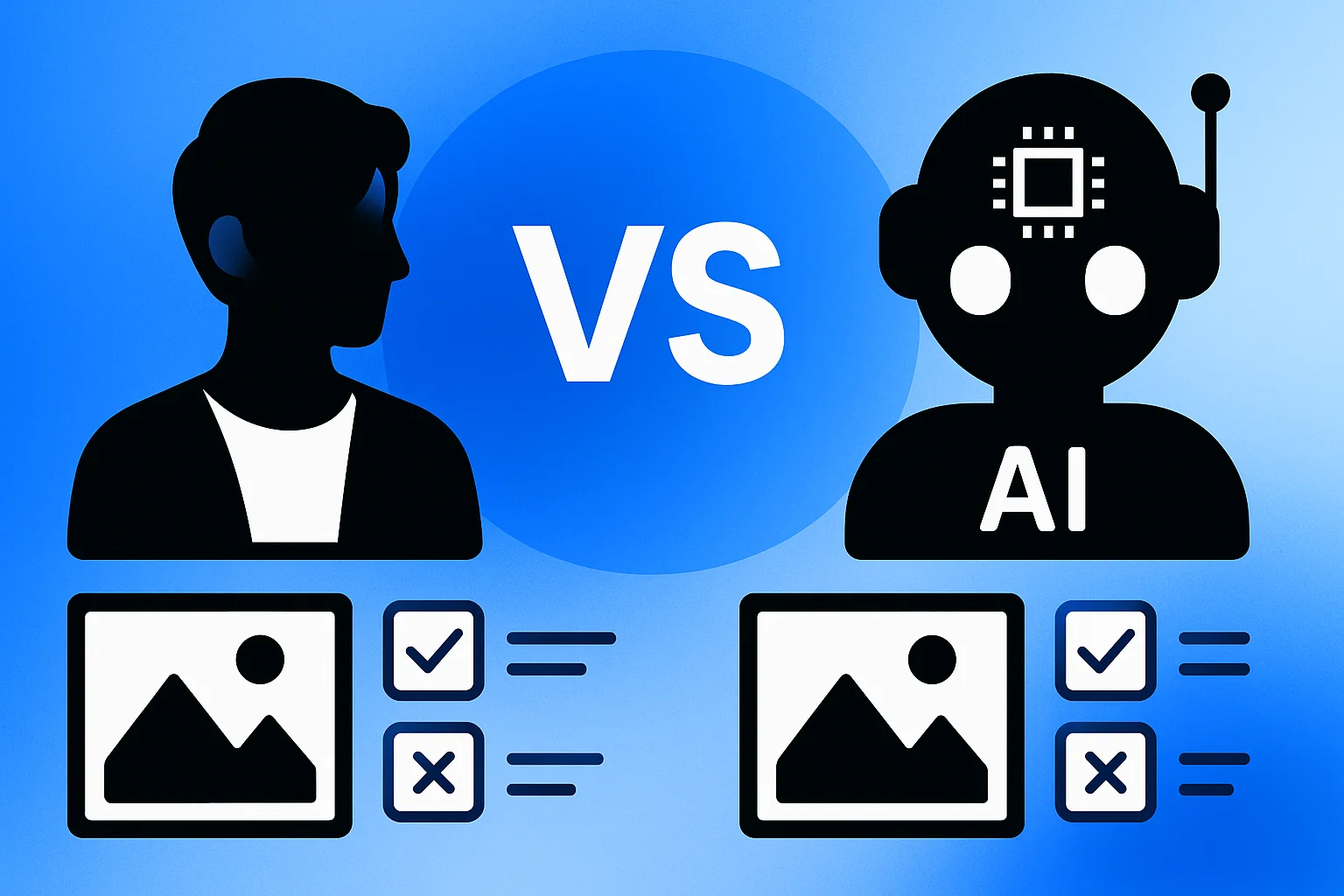AI-driven content curation can scale your social media and marketing efforts at unprecedented speed. But it often lacks the strategic insight and emotional resonance that transforms curated content from noise into meaningful conversation with your audience.
The choice between AI and human content curation isn’t binary. It’s about understanding where each approach excels and how they complement one another.
AI tools excel at processing vast amounts of data. They identify patterns, optimise distribution timing, and personalise content at scale. Human curators bring cultural awareness, emotional intelligence, and strategic thinking that connects deeply with audiences.
This article examines the specific strengths and limitations of both approaches. You’ll discover where AI delivers tangible efficiency gains, where human expertise remains irreplaceable, and how combining both creates superior results for your content marketing strategy.
Understanding the Fundamentals: AI and Human Curation Defined
Content curation involves discovering, organising, and sharing relevant content with your audience. The method you choose fundamentally affects the quality and impact of that curated content.
AI content curation relies on machine learning algorithms and natural language processing. These systems analyse content across the web, identify patterns, and match material to predefined criteria. Tools like ChatGPT and specialised AI content curation platforms can process thousands of articles in minutes.
Human content curation involves people reviewing, evaluating, and selecting content based on expertise and judgement. Curators consider context, audience needs, brand voice, and strategic objectives when choosing what to share.
How AI Processes Content
AI tools analyse content through several technical mechanisms. Natural language processing enables systems to understand text structure, identify topics, and extract key themes from articles and posts.
Machine learning algorithms improve over time. They learn from user interactions, click patterns, and engagement metrics to refine content recommendations and personalisation.
Data analysis capabilities allow AI to evaluate massive content volumes simultaneously. This creates opportunities for discovering relevant material that human curators might miss due to time constraints.
How Humans Evaluate Content
Human curators apply contextual understanding that AI cannot replicate. They recognise subtle cultural references, understand industry politics, and identify nuanced implications in content.
Emotional intelligence guides human curation decisions. Curators assess how content will resonate emotionally with specific audience segments, considering timing, current events, and community sentiment.
Strategic thinking connects individual content pieces to broader marketing objectives. Human curators ensure each shared article advances business goals and reinforces brand positioning.
AI’s Compelling Advantages: Speed, Scale, and Efficiency
Now that you understand how each approach works, consider where AI demonstrates clear superiority. The technology’s strengths cluster around processing power and operational efficiency.
Speed represents AI’s most obvious advantage. AI-generated content is often more scalable and cost-effective, enabling organisations to produce large volumes of content quickly. What takes human curators hours or days, AI accomplishes in minutes.

This velocity matters for time-sensitive content curation. AI tools can identify trending topics as they emerge, curate relevant articles, and schedule distribution before the trend peaks.
Operational Scale and Volume
AI handles volume that would overwhelm human teams. A single AI system can monitor thousands of content sources simultaneously, evaluate each piece against multiple criteria, and maintain consistent output.
Cost-effectiveness follows from this scalability. Organisations reduce labour costs whilst maintaining high content output volumes. This efficiency appeals particularly to businesses with limited marketing budgets.
Consistency in execution represents another AI strength. Algorithms apply the same evaluation criteria to every content piece without fatigue, bias, or inconsistent judgement affecting quality.
Data-Driven Personalisation
AI excels at content personalisation through data analysis. Systems track individual user preferences, behaviour patterns, and engagement history to tailor content recommendations for each audience member.
AI-driven content testing has been shown to increase engagement, with some reports indicating significant uplifts. This measurable improvement stems from AI’s ability to match content to user interests at scale.
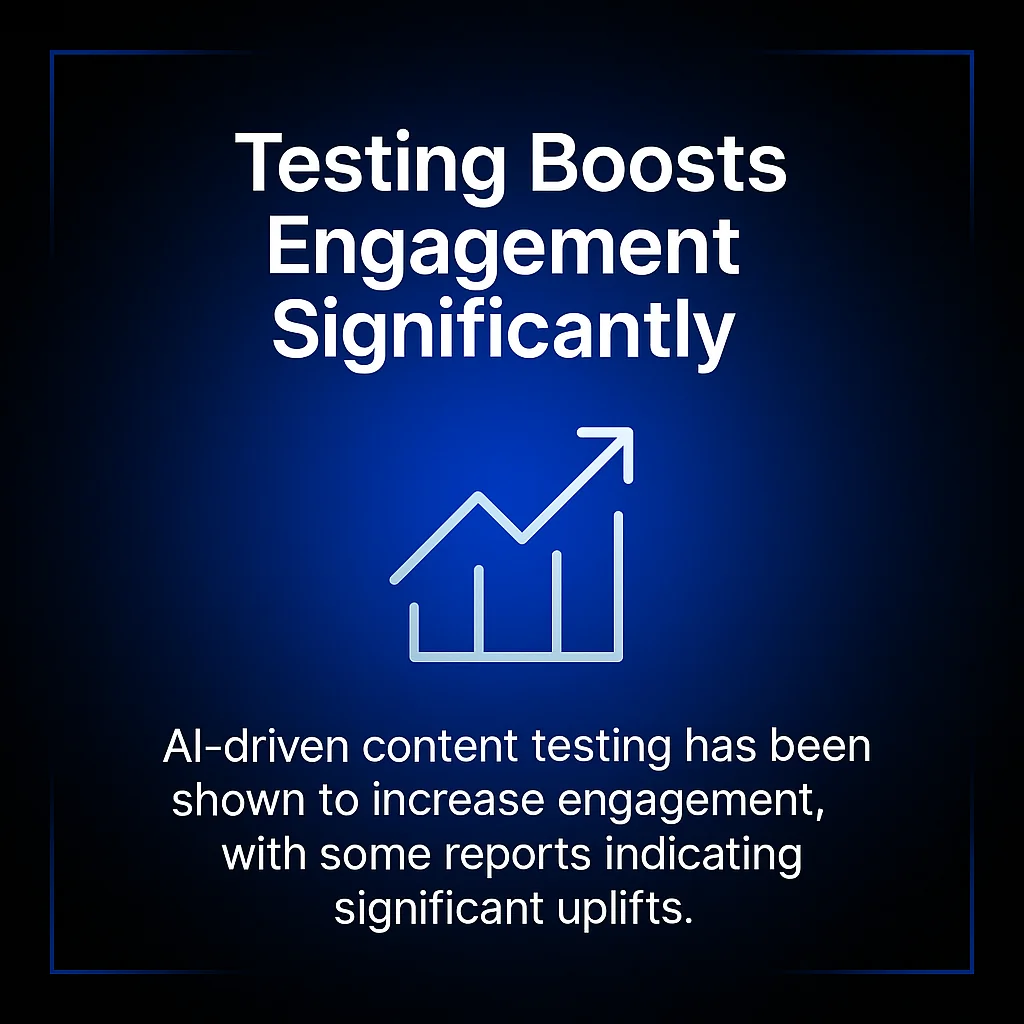
Automation of repetitive tasks frees human team members for strategic work. Automated content curation handles routine discovery and initial filtering whilst humans focus on final selection and strategic direction.
Human Expertise: Creativity, Context, and Connection
With AI’s efficiency advantages established, examine where human capabilities prove irreplaceable. These strengths centre on understanding, creativity, and authentic connection.
Human creativity remains essential for originality, emotional resonance, and crafting messages that deeply connect with audiences. This isn’t merely theoretical—it affects real engagement outcomes.
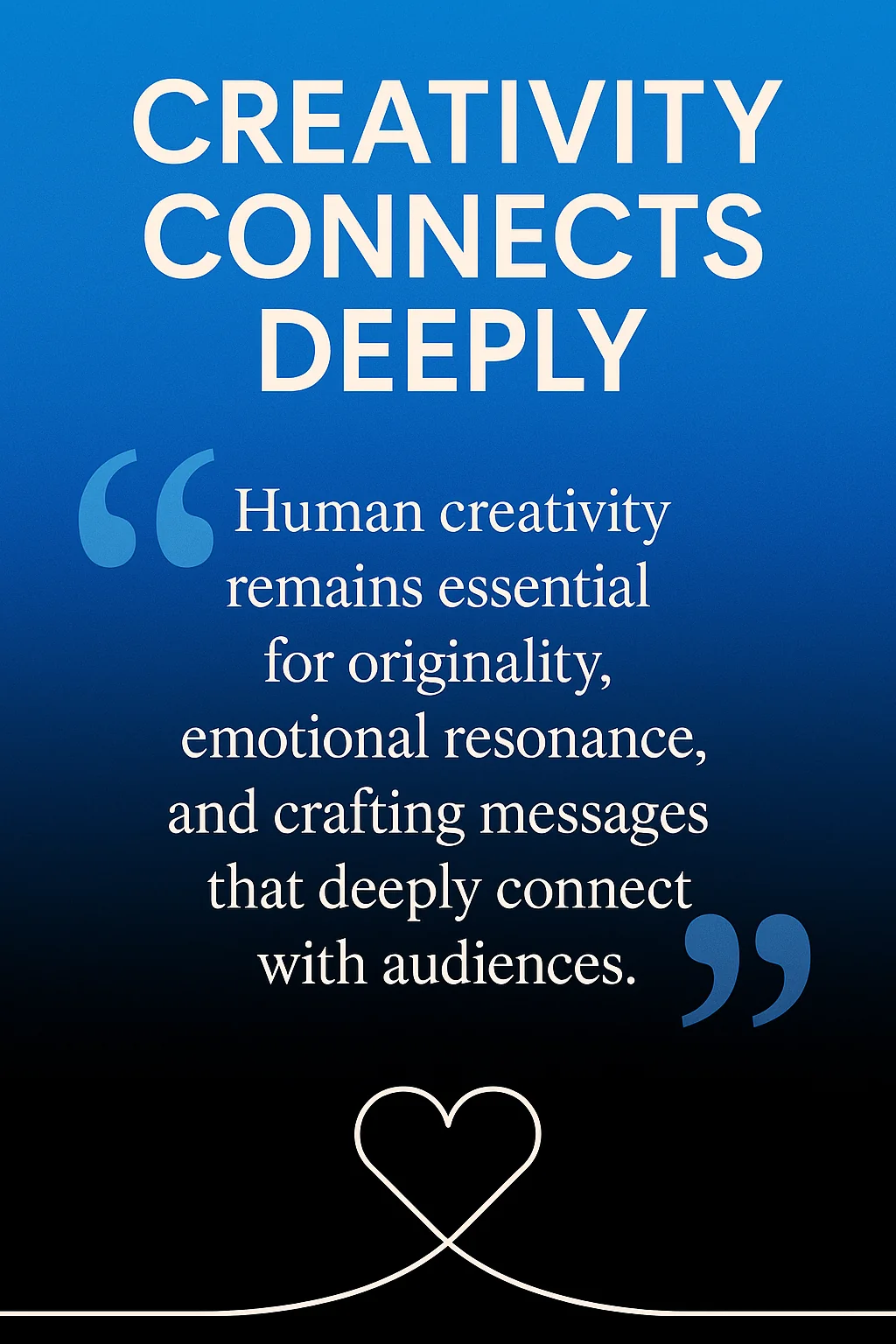
Cultural understanding represents a distinctly human strength. People recognise subtle cultural references, understand local contexts, and identify content that might offend or alienate specific audience segments.
Strategic Thinking and Business Alignment
Humans connect content curation to broader business objectives. They ensure curated material advances specific marketing goals, supports product launches, or reinforces brand positioning in ways AI cannot comprehend.
Critical analysis of content quality surpasses AI capabilities. Human curators evaluate argument strength, identify logical fallacies, and assess source credibility with sophisticated judgement.
Industry knowledge informs human curation decisions. Experienced curators understand sector dynamics, recognise emerging trends before data confirms them, and identify content that addresses unstated audience needs.
Emotional Intelligence and Audience Understanding
Emotional intelligence guides human content selection. Curators assess how material will make audiences feel, considering emotional impact alongside informational value.
Brand voice consistency requires human oversight. Whilst AI can follow guidelines, humans ensure curated content authentically represents brand personality and values across different contexts.
Relationship building through content demands human touch. People understand how to use curated material to nurture community, spark meaningful conversations, and strengthen audience connections.
Recognising AI’s Critical Limitations
Understanding AI’s strengths provides incomplete perspective without examining its constraints. These limitations affect content quality and strategic effectiveness.
Context comprehension remains AI’s most significant weakness. Algorithms struggle with nuanced situations, cultural subtleties, and content that requires deep background knowledge to evaluate properly.
AI-generated content may lack the emotional depth found in human-created material. Systems can identify emotional keywords but cannot genuinely understand or replicate authentic human emotion in curation decisions.
Bias and Ethical Considerations
AI systems inherit biases from training data. This creates ethical concerns when algorithms perpetuate stereotypes or favour certain perspectives without conscious awareness.
Quality control challenges emerge with AI curation. Systems may select technically relevant content that’s outdated, misleading, or from unreliable sources without proper verification.
Contextual errors occur when AI misinterprets meaning. Algorithms struggle with sarcasm, irony, and cultural references that humans instinctively recognise.
Authenticity and Audience Trust
Audiences increasingly value authenticity. Content that feels algorithmically selected can damage trust and reduce engagement compared to thoughtfully curated material.
UGC posts are projected to garner 70% more engagement than traditional brand posts in 2025. This preference for authentic, human-centred content extends to curation—audiences notice when content feels mechanically selected versus thoughtfully chosen.
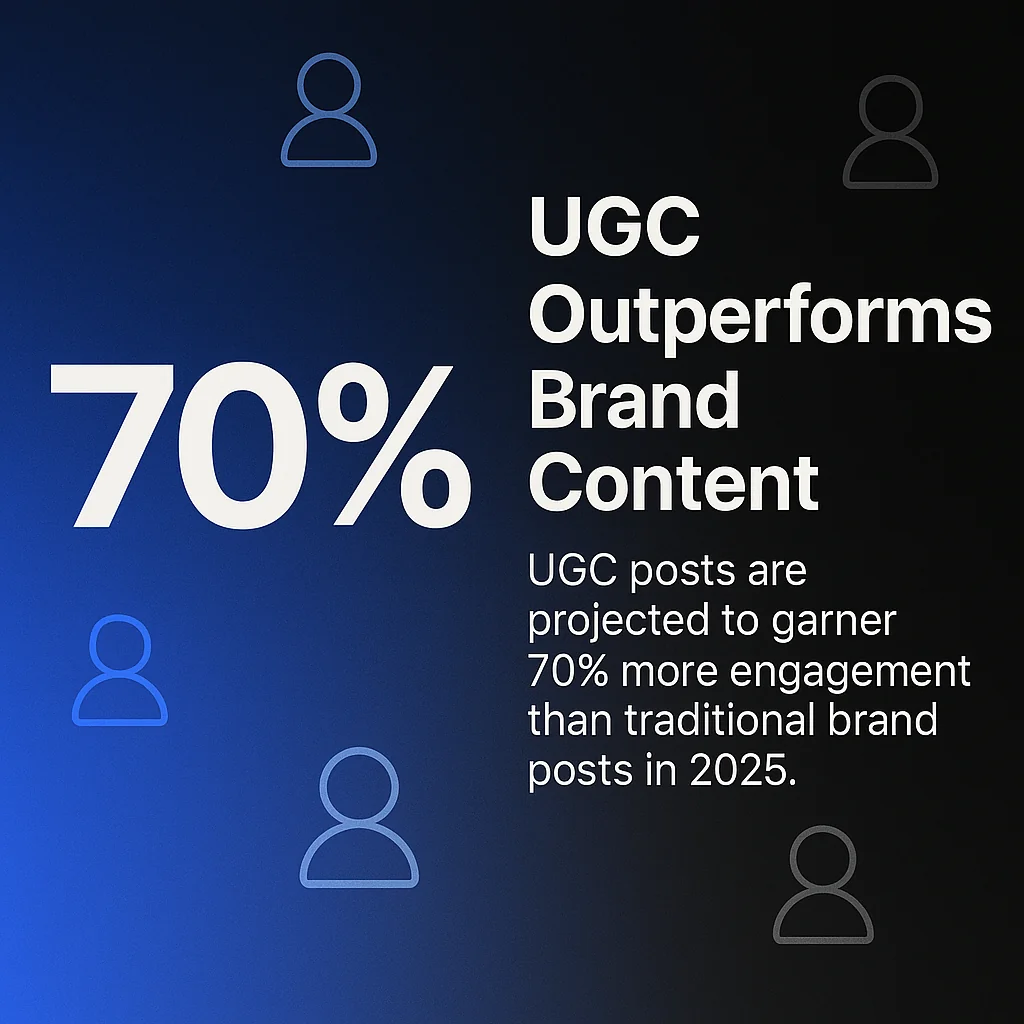
Over-reliance on AI creates homogenisation risk. When many organisations use similar algorithms, audiences encounter repetitive content that feels generic rather than specifically valuable.
The Strategic Case for Human-AI Collaboration
Having examined each approach’s strengths and weaknesses, consider how combining them creates superior outcomes. Collaboration leverages AI efficiency whilst preserving human insight.
Agencies report tangible benefits in ROI, performance, and relevance when combining AI-driven curation with human oversight. This hybrid model outperforms either approach alone.
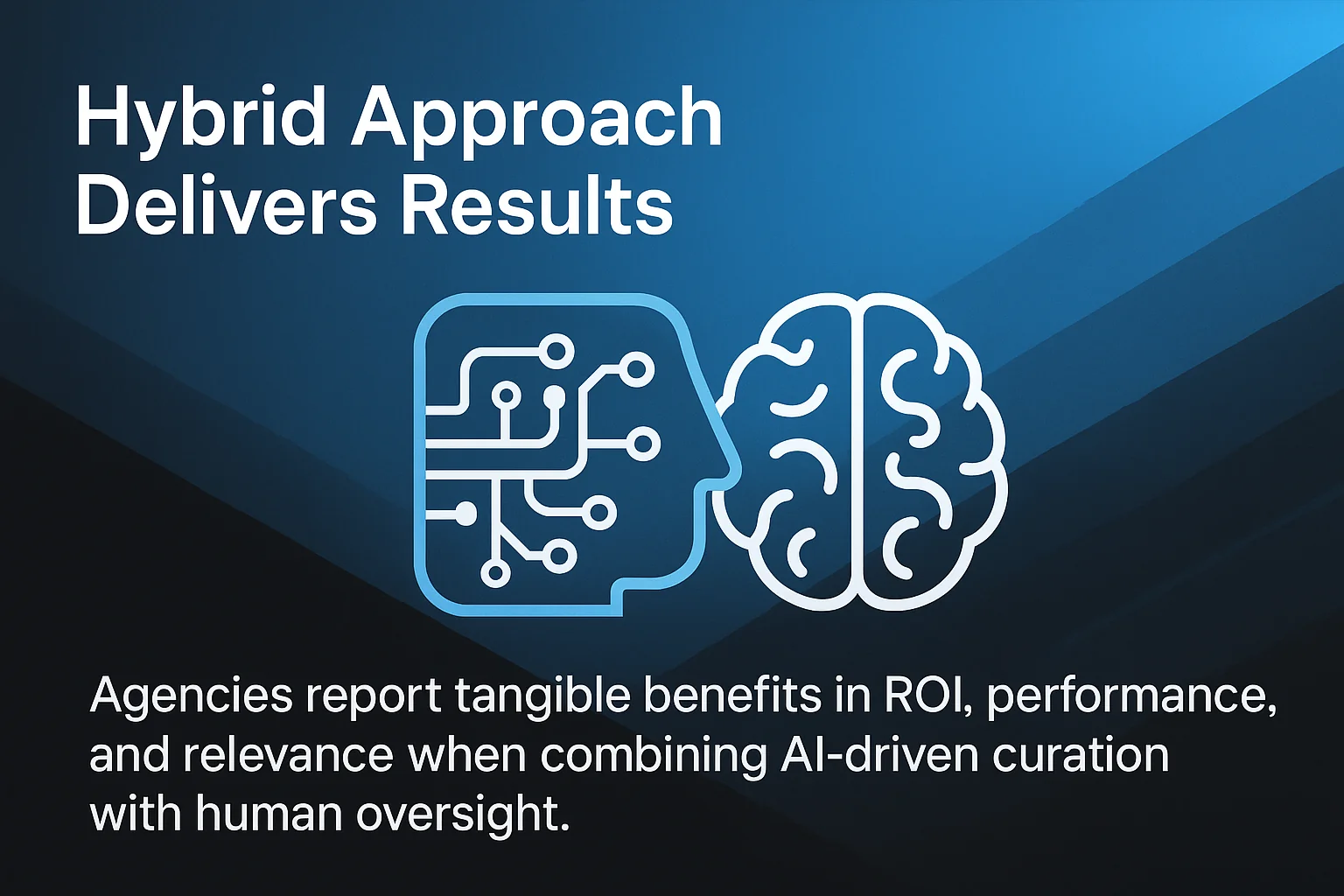
The most effective strategy assigns each component tasks matching its strengths. AI handles high-volume discovery, initial filtering, and data analysis. Humans provide strategic direction, final selection, and quality assurance.
Practical Collaboration Models
The AI-assisted human model uses algorithms for discovery and initial sorting. Human curators then review AI-selected content, applying strategic judgement for final approval and scheduling.
This approach combines AI’s processing speed with human discernment. Curators spend less time searching and more time on strategic selection and audience engagement.
The human-directed AI model inverts the relationship. Human strategists define criteria, priorities, and brand guidelines. AI then executes curation following these human-established parameters.
Implementation Best Practices
Start with clear role definition. Establish which decisions require human judgement and which AI can handle autonomously based on your specific content strategy and audience needs.
Implement feedback loops that allow human curators to refine AI parameters. Regular review of AI-selected content improves algorithm performance over time through supervised learning.
Maintain human oversight for sensitive topics, brand-critical content, and material requiring cultural awareness. Reserve AI for high-volume, lower-risk curation tasks where speed matters most.
| Approach | Best Use Cases | Primary Benefit |
|---|---|---|
| Pure AI Curation | High-volume content aggregation, news monitoring, trending topic identification | Maximum speed and scale |
| Pure Human Curation | Brand-critical content, thought leadership, community building | Strategic alignment and authenticity |
| AI-Assisted Human | Daily social media curation, newsletter content, blog topic discovery | Efficiency with quality control |
| Human-Directed AI | Personalised recommendations, audience segmentation, A/B testing | Scalable customisation |
Ensuring Quality Through Human Oversight and Ethical Standards
With collaboration models established, address the quality control and ethical considerations that determine success. These frameworks protect brand reputation and audience trust.
Human oversight remains non-negotiable for maintaining content quality. Even sophisticated AI requires regular auditing to identify errors, biases, and misaligned selections.
Establish review protocols that sample AI-curated content regularly. Human team members should evaluate a percentage of AI selections to ensure ongoing quality and relevance.
Bias Detection and Mitigation
Implement bias monitoring systems that track AI content selection patterns. Look for demographic imbalances, perspective homogeneity, or systematic exclusion of certain viewpoints.
Diverse human review teams help identify biases that might escape notice from homogeneous groups. Different perspectives catch different problems in AI-curated content.
Regular algorithm audits examine training data and selection patterns. Update AI parameters when audits reveal systematic biases affecting content quality or audience representation.
Transparency and Audience Communication
Consider disclosing AI use in content curation. Audiences increasingly value transparency about automated systems affecting their content experience.
Balance automation with human touchpoints that maintain authentic connection. Even heavily AI-assisted curation benefits from visible human involvement in audience interactions.
Establish clear escalation paths for content concerns. Ensure human team members can quickly override AI decisions when quality, accuracy, or appropriateness questions arise.
Navigating the Future: Finding Your Optimal Balance
The debate between AI and human content curation misframes the central question. The real challenge involves determining the right balance for your specific organisation, audience, and objectives.
Your optimal mix depends on several factors. Budget constraints, content volume requirements, audience expectations, and brand positioning all influence whether you should emphasise AI efficiency or human expertise.
Start by assessing your current curation challenges. If volume and speed limit your content marketing, AI offers immediate solutions. If engagement and authenticity present concerns, prioritise human involvement.
Building Your Hybrid Strategy
Begin with an inventory of your content curation strategies and identify tasks suited for automation. Repetitive discovery, initial filtering, and data analysis typically benefit most from AI implementation.
Preserve human decision-making for brand-critical content, sensitive topics, and strategic direction. These areas demand judgement, cultural awareness, and emotional intelligence that AI cannot provide.
Implement gradually rather than attempting complete transformation. Test AI tools with low-risk content streams before expanding to mission-critical curation tasks.
Measuring Success
Track engagement metrics to evaluate your approach effectiveness. Compare performance between AI-curated, human-curated, and hybrid-curated content to identify optimal strategies.
Monitor efficiency gains from AI implementation. Calculate time savings, cost reductions, and volume increases to quantify automation benefits.
Assess audience satisfaction through surveys, comments, and direct feedback. Qualitative data reveals whether your curation approach resonates with your community.
Key Questions About AI and Human Content Curation
What distinguishes human creativity from the content created by artificial intelligence?
Human creativity involves generating novel ideas, expressing emotions, and synthesising diverse experiences, often resulting in unique and unpredictable outcomes. In contrast, AI creates content by analysing large datasets and reproducing patterns, but it does not truly understand context or meaning and cannot originate ideas independently. This fundamental difference means AI can assist but not fully replicate human creative processes.
How is AI used in content recommendation?
AI-driven recommendation systems use machine learning algorithms to track and interpret user actions, such as clicks, searches, and purchases, to predict what content or products a user is likely to enjoy. These systems continuously learn from new data, refining their suggestions to better match individual preferences and increase engagement. This technology underpins the recommendation engines of major online platforms.
What is the 30% rule in AI?
The 30% rule in AI is commonly used in educational and creative settings to promote responsible use of artificial intelligence. It means that whilst AI can assist with up to 30% of a task—such as generating ideas or checking work—the majority of the content or solution should come from the individual’s own thinking and research. This approach helps maintain originality and critical thinking skills.
Moving Forward With Confidence
The choice between AI and human content curation isn’t about selecting one over the other. It’s about understanding where each excels and building a strategy that leverages both.
AI brings undeniable efficiency, scale, and data-processing capabilities that transform content operations. Human expertise provides strategic thinking, emotional intelligence, and cultural awareness that create genuine audience connections.
Your success depends on thoughtfully combining these approaches. Use AI to handle volume and speed whilst preserving human judgement for strategic decisions and quality control.
Start by evaluating your current content curation benefits and challenges. Identify where AI can deliver immediate efficiency gains and where human expertise remains essential for your brand.
The future of content curation isn’t purely automated or entirely manual. It’s intelligently hybrid, strategically balanced, and constantly refined based on performance data and audience response.
Take the first step today. Assess one area of your content curation where AI could improve efficiency, then implement a pilot programme with proper human oversight. Measure results, learn from the data, and adjust your approach accordingly.
